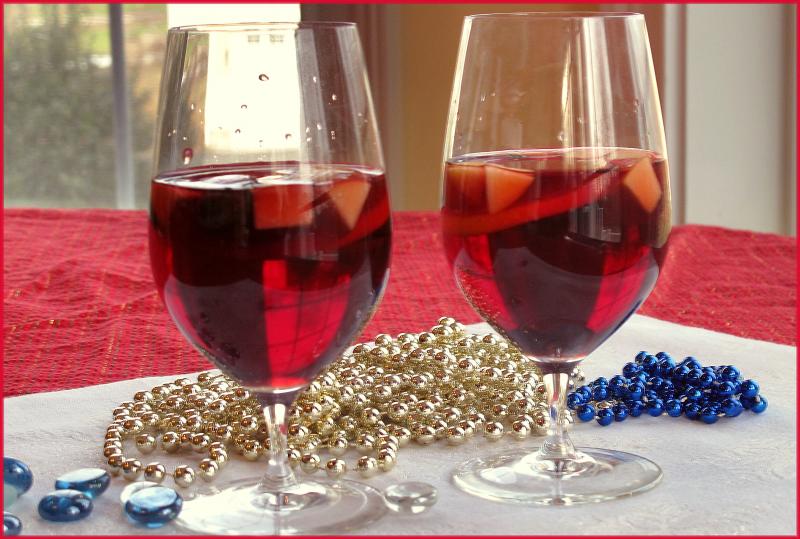High-quality red wines are best for authentic sangria
For our New Year’s Eve celebration this year, we replaced the traditional champagne toast with something sweeter – sangria. Over the past several months, I’ve developed a taste for the combination of red wine, sweet fruit and the rich notes of brandy or tequila. Although our usual adult beverage is Chardonnay, this has been a nice change.
Of course, sangria isn’t anything new, as food historians have noted that early Greeks and Romans mixed their wine with sugar and spices centuries ago. Although this practice likely improved the taste, it actually had more to do with health, as most water was bacteria-laden and unsafe to drink. Our ancestors in this country made a similar substitution, drinking cider instead of water.
The name of the drink, sangria, translates from the Spanish word for “blood,” referring to the main ingredient, red wine. Here is where you want to select a lovely Tempranillo or other fruity red wine from the Rioja region of Spain. At least that’s how sangria started. Once its popularity extended beyond Spain, recipes changed to include French grapes as well as white wines.
According to records of the culinary offerings at the 1964-65 World’s Fair held in New York City, this is when and where American interest in sangria began. At the popular Spanish Pavilion, in addition to exquisite paintings by Goya and El Greco, and entertaining performances by flamenco dancers, they featured the fruit-garnished wine punch as a way to improve the reputation of Spanish wines.
Unfortunately, what emerged from that time was an overly sweet cocktail with a reputation as the best destination for a poor-quality red wine. Through the years, as appreciation grew for quality Spanish wines, so did interest in serving a high-quality sangria made with curated ingredients, instead of cheap red wine, chopped fruit and sweeteners.
Like many popular foods from meatloaf to chicken soup, you can find dozens of recipes that claim to be the “best” version of the dish. With sangria, it’s less a recipe than it is an approach to understanding the role of each component. The primary focus should be on the backbone ingredient, a red wine with little tannin, and bright fruit notes of cherry and strawberry.
The next ingredients are the fruits themselves, which should be sturdy enough not to disintegrate into the mixture. Apples, berries, pears, grapes and citrus fruits are always good choices. You’ll want a little sweetener, such as agave nectar, brown sugar or honey; avoid white sugar or simple syrup, which don’t contribute to the flavor profile. In addition, a splash of orange juice is a key element.
Your choice of fortifier ranges widely: brandy, rum, tequila, Cointreau, or Grand Marnier. Once the ingredients are mixed, it’s a good idea to refrigerate the cocktail for at least two hours (or overnight) before serving. The brightly colored liquid with wine-infused fruit looks terrific served from a punch bowl, and sangria can keep for several days in the refrigerator.
The one other ingredient found in many recipes is sparkling water or seltzer, which I think adds too much confusion to the fruity drink. I’ve included a recipe that is easily modified to your taste for more or less sweetness and the liquor or liqueur you prefer. Happy New Year!
Sangria
3 T brown sugar
3/4 C orange juice
1/2 C Calvados*
1 750 ml bottle Tempranillo
1 apple, chopped
1 orange, halved and sliced
1 lime, sliced
1/4 C red grapes
1/4 C blueberries or blackberries
orange slices for garnish
Combine the brown sugar and orange juice in a large pitcher; whisk until sugar dissolves. Add remaining ingredients and stir to combine. Refrigerate for at least two hours (or overnight). To serve, pour sangria with fruit into medium-bowl wine glasses and garnish with additional orange slices. Optional serving suggestion: Decant sangria into a punch bowl and add 2 C sparkling water. *Note: Calvados adds apple notes; other options include brandy, rum, tequila, Cointreau and Grand Marnier.






















































